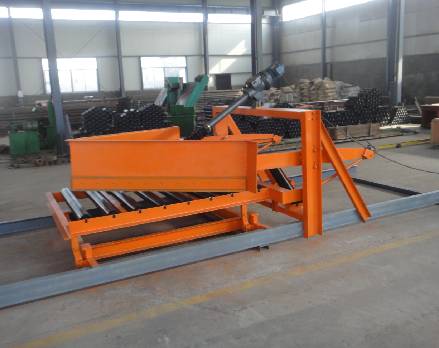 Afrikaans
Afrikaans  Albanian
Albanian  Amharic
Amharic  Arabic
Arabic  Armenian
Armenian  Azerbaijani
Azerbaijani  Basque
Basque  Belarusian
Belarusian  Bengali
Bengali  Bosnian
Bosnian  Bulgarian
Bulgarian  Catalan
Catalan  Cebuano
Cebuano  Corsican
Corsican  Croatian
Croatian  Czech
Czech  Danish
Danish  Dutch
Dutch  English
English  Esperanto
Esperanto  Estonian
Estonian  Finnish
Finnish  French
French  Frisian
Frisian  Galician
Galician  Georgian
Georgian  German
German  Greek
Greek  Gujarati
Gujarati  Haitian Creole
Haitian Creole  hausa
hausa  hawaiian
hawaiian  Hebrew
Hebrew  Hindi
Hindi  Miao
Miao  Hungarian
Hungarian  Icelandic
Icelandic  igbo
igbo  Indonesian
Indonesian  irish
irish  Italian
Italian  Japanese
Japanese  Javanese
Javanese  Kannada
Kannada  kazakh
kazakh  Khmer
Khmer  Rwandese
Rwandese  Korean
Korean  Kurdish
Kurdish  Kyrgyz
Kyrgyz  Lao
Lao  Latin
Latin  Latvian
Latvian  Lithuanian
Lithuanian  Luxembourgish
Luxembourgish  Macedonian
Macedonian  Malgashi
Malgashi  Malay
Malay  Malayalam
Malayalam  Maltese
Maltese  Maori
Maori  Marathi
Marathi  Mongolian
Mongolian  Myanmar
Myanmar  Nepali
Nepali  Norwegian
Norwegian  Norwegian
Norwegian  Occitan
Occitan  Pashto
Pashto  Persian
Persian  Polish
Polish  Portuguese
Portuguese  Punjabi
Punjabi  Romanian
Romanian  Russian
Russian  Samoan
Samoan  Scottish Gaelic
Scottish Gaelic  Serbian
Serbian  Sesotho
Sesotho  Shona
Shona  Sindhi
Sindhi  Sinhala
Sinhala  Slovak
Slovak  Slovenian
Slovenian  Somali
Somali  Spanish
Spanish  Sundanese
Sundanese  Swahili
Swahili  Swedish
Swedish  Tagalog
Tagalog  Tajik
Tajik  Tamil
Tamil  Tatar
Tatar  Telugu
Telugu  Thai
Thai  Turkish
Turkish  Turkmen
Turkmen  Ukrainian
Ukrainian  Urdu
Urdu  Uighur
Uighur  Uzbek
Uzbek  Vietnamese
Vietnamese  Welsh
Welsh  Bantu
Bantu  Yiddish
Yiddish  Yoruba
Yoruba  Zulu
Zulu Manufacturers of Troughing Rollers for Efficient Material Handling Solutions
The Role of Troughing Rollers in Conveyor Systems An Insight for Manufacturers
Troughing rollers are essential components in conveyor systems worldwide. These rollers facilitate the efficient transportation of materials across various industries, including mining, agriculture, and manufacturing. Understanding their significance helps manufacturers optimize their production processes and ensure the reliability of their conveyor systems.
What are Troughing Rollers?
Troughing rollers are specially designed rollers used in conveyor systems to support the conveyor belt and the material being transported. Unlike flat rollers, troughing rollers feature a curved surface that forms a 'trough' shape, which cradles the material being moved, preventing spillage and ensuring that the load remains stable during transit.
These rollers are typically arranged in a set of three – the center roller being the lowest and the outer rollers slightly elevated. This design not only enhances material containment but also reduces the likelihood of belt damage. The angles of the rollers usually vary from 20 to 45 degrees, allowing for flexibility in handling different types of materials and loads.
Importance of Troughing Rollers
1. Improved Material Handling Troughing rollers significantly enhance the efficiency of material handling. Their design allows the conveyor system to transport bulk materials with minimal spillage, thereby reducing waste and ensuring that transportation operations remain cost-effective.
2. Stability and Safety When materials are moved through a conveyor system, stability is paramount. Troughing rollers help maintain the alignment of the belt and the material load, thus mitigating the risks of accidents that may arise due to spillage or unexpected shifts in load positioning.
3. Extended Equipment Lifespan Properly designed and maintained troughing rollers contribute to the overall longevity of a conveyor system. By minimizing belt wear and reducing the strain on other components, manufacturers can decrease maintenance costs and prolong the lifespan of their equipment.
4. Versatility Troughing rollers can accommodate a broad range of materials, from light products like grains to heavier items such as ores and aggregates. This adaptability makes them suitable for various applications, making them an essential asset in diverse industries.
Manufacturing Troughing Rollers
troughing rollers manufacturers

Manufacturers of troughing rollers must adhere to stringent quality standards to ensure that their products are durable and effective
. Key considerations include- Materials The choice of materials is crucial. High-quality steel is commonly used to manufacture rollers due to its strength and durability. Additionally, some manufacturers utilize specialized coatings to protect against corrosion and wear, thereby extending the lifespan of the rollers.
- Engineering Design The design of troughing rollers must cater to the specific needs of the conveyor system they will serve. Engineers must account for factors such as load capacity, the type of material being transported, and the environmental conditions of the operational site.
- Testing and Quality Control Rigorous testing during the manufacturing process ensures that each roller meets the required specifications and performance standards. Quality control measures help identify defects or inconsistencies, guaranteeing that manufacturers deliver reliable products to their clients.
Challenges Faced by Troughing Roller Manufacturers
While the demand for troughing rollers continues to grow, manufacturers face several challenges
1. Market Competition The conveyor roller market is becoming increasingly competitive. Manufacturers must differentiate their products through innovation, quality, and customer service.
2. Technological Advancements The industry is always evolving, with new materials and technologies emerging. Keeping up with these advancements is crucial for manufacturers looking to provide cutting-edge solutions to their customers.
3. Sustainability Concerns As industries focus more on sustainable practices, manufacturers are under pressure to minimize their environmental impact. This includes sourcing materials responsibly and implementing eco-friendly manufacturing processes.
Conclusion
Troughing rollers play a vital role in the efficiency and safety of conveyor systems across various industries. For manufacturers, understanding the significance, design, and potential challenges associated with these rollers is essential for maintaining a competitive edge in the market. By prioritizing quality, innovation, and customer service, manufacturers can meet the evolving needs of their clients while contributing to the overall effectiveness of material handling solutions. As industries continue to grow, the importance of reliable, high-quality troughing rollers will remain paramount.
-
Revolutionizing Conveyor Reliability with Advanced Rubber Lagging PulleysNewsJul.22,2025
-
Powering Precision and Durability with Expert Manufacturers of Conveyor ComponentsNewsJul.22,2025
-
Optimizing Conveyor Systems with Advanced Conveyor AccessoriesNewsJul.22,2025
-
Maximize Conveyor Efficiency with Quality Conveyor Idler PulleysNewsJul.22,2025
-
Future-Proof Your Conveyor System with High-Performance Polyurethane RollerNewsJul.22,2025
-
Driving Efficiency Forward with Quality Idlers and RollersNewsJul.22,2025





























